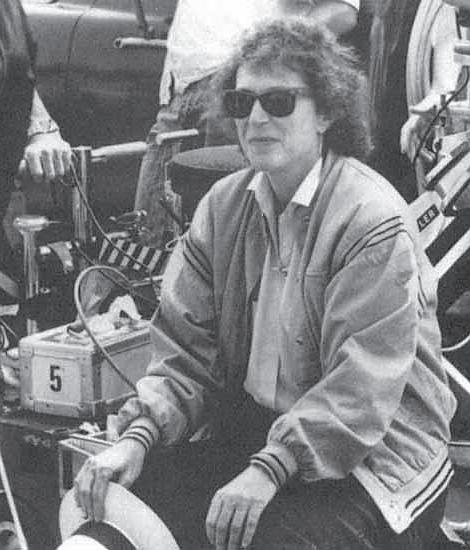
3 minute read
Joan Micklin Silver Remembered
ARTS&LIFE FILM
Joan Micklin Silver with Amy Irving in Crossing Delancey (1988).
Advertisement
IMDB

Joan Micklin Silver Remembered Filmmaker portrayed the romantic and cultural struggles of Jewish women.


GEORGE ELKIND CONTRIBUTING WRITER
After decades making movies starring characters — often women — bristling against social strictures and navigating romance in ways that tended to surprise even themselves, Jewish filmmaker Joan Micklin Silver has died at 85.
Silver, who died Dec. 31, 2020, was bestknown for 1988’s Crossing Delancey, a surprise hit. The film finds Isabelle Grossman (Amy Irving), a 30-something Manhattan bookseller, navigating romance amid the pressures of not just various men — as is typical — but the influence of the older Jewish women she grew up with, who prove eager to find a match for her. These forces clash against Grossman’s own feminist-informed expectations of herself, of how she should find love and her desire to see herself as an independent person.
In Delancey, as in 1975’s Hester Street, which was set in a close-knit Polish-Jewish enclave (many potential distributors dismissed it as “too ethnic,” leading her to self-finance), Silver — herself the daughter of Russian-Jewish immigrants, though she grew up in Omaha, Nebraska — showed the compromises, frustrations and tensions common to New York Jewish life.
Jewish neighborhoods in each film are what they so often really are: symbolic spaces rich in sometimes associations with identity, heritage, class and culture. Silver’s work tended to focus on romantic aspirations and struggles between characters who are caught between romance and independence, tradition and contemporaneity, and often Jewish and American identity.
Though she worked on a small scale, Silver had an accomplished eye for casting and directing actors, a broad grasp of social reality, and a sharp eye for details of spaces ranging from newsrooms to publishing parties and Jewish weddings.
And there are many sweetly realized, quite disarming details across her work through which Silver showed a grounded, firsthand understanding of Jewish identity. In Delancey, it’s Irving’s dense halo of curls, the tables overflowing with Jewish cuisine, a friend’s fainting spell at a bris and the warm depiction of Grossman’s bubbie by Reizl Bozyk (previously a Yiddish theater star), which draws out generational shifts over time in Jewish-American life.
In Hester, flashpoints between traditional norms and assimilation are more pointed and dramatic — as when, at a picnic, Jake (Steven Keats) demands of his more reserved, recently arrived wife (Carol Kane): “Am I a Jew or a gentile? Just by what you see.” Anxious to pass freely as a white gentile, he clearly wishes for her to say the latter.
Though Hester’s scope is modest, it speaks — like Delancey — to the struggles of many in finding the best route among an overwhelming many in approaching diasporic existence and the complex ways personal aspiration often grates against social mores. (Both filmsare available for VOD rental on iTunes. Hester is also available on streaming service Fandor.)
While Silver distinguished herself as a great director of actors early on (Carol Kane netted a Best Actress Oscar nomination for Hester Street), and she collaborated with many big names (Gena Rowlands, Sissy Spacek, Rita Wilson), she struggled throughout her career to secure funding for projects, a difficulty attributable to persistent industrial bias against women creators. In light of this, her body of work — populated by characters whose aspirations and self-conceptions seem at odds with the lives they’ve managed to build and the expectations of those around them — seems all the more impressive.
Joan Micklin Silver couldn’t interest a Hollywood studio in doing a film about early Eastern European immigrants to New York, which would incorporate some Yiddish. So she wrote, directed and co-produced Hester Street (1975) herself.

JEWISH WOMEN’S ARCHIVE










